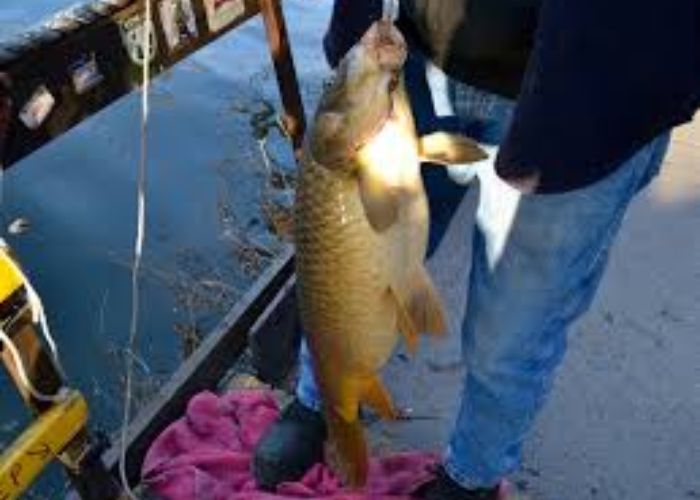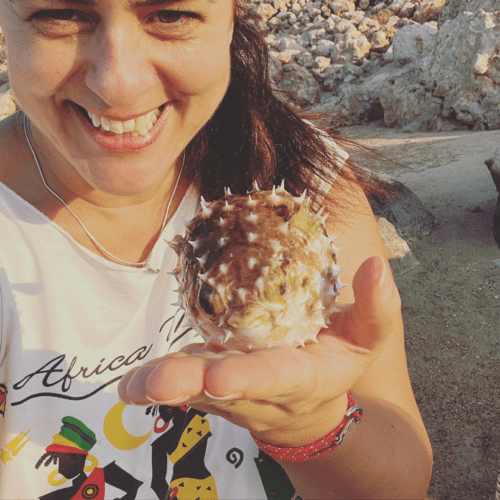As an aquatic ecologist with over 7 years of experience studying urban waterways, I’m often asked how fish and other aquatic life can survive in large cities’ rivers that have faced extensive development and pollution over the years. The Chicago River is a prime example – once nicknamed “the sewer of the city”, how can fish possibly live in its waters today? Read below about “How Fish Survive in Large Urban Waterways Like the Chicago River”.
Through my research, I’ve gained deep insight into how fish populations adapt and evolve to thrive even in the harshest urban environments. In this article, I’ll share what I’ve learned about how fish survive in the revitalized yet still challenging habitat of the Chicago River.
Table of Contents
A Dramatic Turnaround from Dead to Teeming with Life
It may be hard to believe the Chicago River was once declared “biologically dead” in the 1920s. Extreme pollution from stockyards, tanneries, and untreated wastewater had created a toxic environment inhospitable to most aquatic life. Dissolved oxygen levels frequently dropped below 3 mg/L, making it impossible for fish to breathe.
Yet in an amazing comeback story, the Chicago River underwent extensive cleanup efforts in the late 20th century. Billions of dollars were invested in upgraded sewage treatment plants, controlling industrial pollution, and diverting human waste away from the waterway. These efforts paid off – by the 1990s, dissolved oxygen levels had risen to over 5 mg/L, no longer chronically stressful for fish.
Today, the Chicago River hosts over 70 species of fish, from tiny minnows to large common carp over 30 lbs. Sensitive fish like bass and bluegill have returned, indicating good water quality. Thriving fisheries also support abundant wildlife like herons, turtles, and mink that feed on the fish. Clearly, fish have found ways to adapt to urban river conditions.
Overcoming Water Quality Challenges
Even with major improvements, the Chicago River’s water quality still faces issues like nutrient pollution and fluctuating oxygen levels that pose challenges for fish. Yet adaptive behaviors and physiological adaptations allow fish to survive:
- Seeking refuge: Many fish temporarily leave the main river to escape poor conditions, sheltering in cooler, oxygenated tributaries or shaded backwaters.
- Adjusting breathing/metabolism: Fish like carp and catfish can gulping air when oxygen runs low. Others like goldfish reduce their metabolism to require less oxygen.
- Tolerating turbidity: Sediment from runoff reduces clarity, but tolerant bullhead catfish and suckers don’t rely heavily on sight when feeding.
- Coping with toxins: Exposing younger fish helps build resistance. Goldfish and green sunfish produce larger livers to detoxify contaminants.
- Bouncing back after kills: Mass fish kills from severe drops in oxygen or pH are rare now, but robust, fast-reproducing fish like gizzard shad quickly repopulate afterwards.
The species composition has shifted towards tolerant, adaptable species. Still, it’s amazing how fish have found ways to deal with suboptimal conditions.
Navigating an Altered Physical Habitat

In addition to water quality impacts, the Chicago River’s physical habitat has been dramatically altered by channelization. Its original meandering course through wetlands was straightened to improve navigation and control flooding. Yet some habitat diversity still exists:
- Deep shipping channels
- Shallow, vegetated backwaters
- Riprap banks and seawalls
- Tributary confluences
Fish seek out suitable habitats within this mosaic based on needs for flow refuge, spawning sites, feeding spots, etc. Common carp prefer low-flow backwaters to forage in silty bottom sediments. Largemouth bass lurk around submerged pilings and other structure to ambush prey. Many species migrate into vegetated, gravel-bottomed tributaries to spawn in spring.
The river’s flow patterns have also been altered by the Lockport Controlling Works dam and sluice gates, although seasonal flow fluctuations continue. Fish have adapted migration patterns and cues around these hydrologic changes. They’ve essentially learned to use the concrete-bound river as a surrogate natural habitat.
Accessing Enough Food Resources
The Chicago River provides abundant food sources to sustain large fish populations and fisheries. Zooplankton, aquatic insects, crayfish, and mollusks flourish, feeding small fish that become prey for larger piscivorous fish. Excess nutrients fuel algae growth, supplementing food webs. Terrestrial insects that fall in off vegetation offer additional nutrients.
Some fish even exploit waste from human sources as food. Carp dig out rich organic matter from sediments containing sewage overflows. Catfish and bullheads scavenge dead fish and food waste discarded into the water. The river’s food web has shifted towards species able to extract calories from less pristine sources.
Overcoming the Impact of Invasive Species
Like many urban waterways, the Chicago River has become infested with destructive invasive species – Asian carp, round goby, zebra mussels and more. These aggressors outcompete native fish for food and habitat. Voracious Asian carp dominate fish biomass at up to 70-90%, gobbling plankton crucial to other species.
Yet some native fish have adapted clever ways to coexist:
- Small fish hide from predators in carp-proof habitats like shallow, densely vegetated backwaters.
- Nest-guarding sunfish breed around structures that block access by egg-eating carp.
- Fast waterfowl like bluegill race to consume food resources before bottom-grubbing carp arrive.
- Channel catfish stay active at night when vision-oriented carp are inactive.
It’s astonishing how adaptable urban fish are, evolving impressive physiological, behavioral and habitat-use strategies for dealing with environmental impacts far beyond what pristine-river fish encounter. They demonstrate that with ample food and periodic refuge from extremes, fish can survive and even thrive in highly-modified urban waterways.
The Chicago River’s restoration is an ongoing effort, as sewage overflows, runoff pollution and invasive species continue to pose threats. Still, the river’s fish populations represent a true success story – bringing abundant wildlife back into the heart of a massive city. Their remarkable resilience offers hope and lessons for revitalizing damaged urban fisheries across the world. I hope you like reading “How Fish Survive in Large Urban Waterways Like the Chicago River”.

Marta, the driving force behind WaterWorldCraze.com, holds a Master’s degree in Marine Biology and has extensive experience in water sports and activities. With over 7+ years of hands-on experience in marine research and conservation, she has participated in numerous underwater expeditions and projects. Her passion for the aquatic world shines through in her expertly curated content. Join Marta as she explores the wonders of marine life and shares her adventures. Connect with her on Instagram @marinebiologymarta for more insights and updates.

